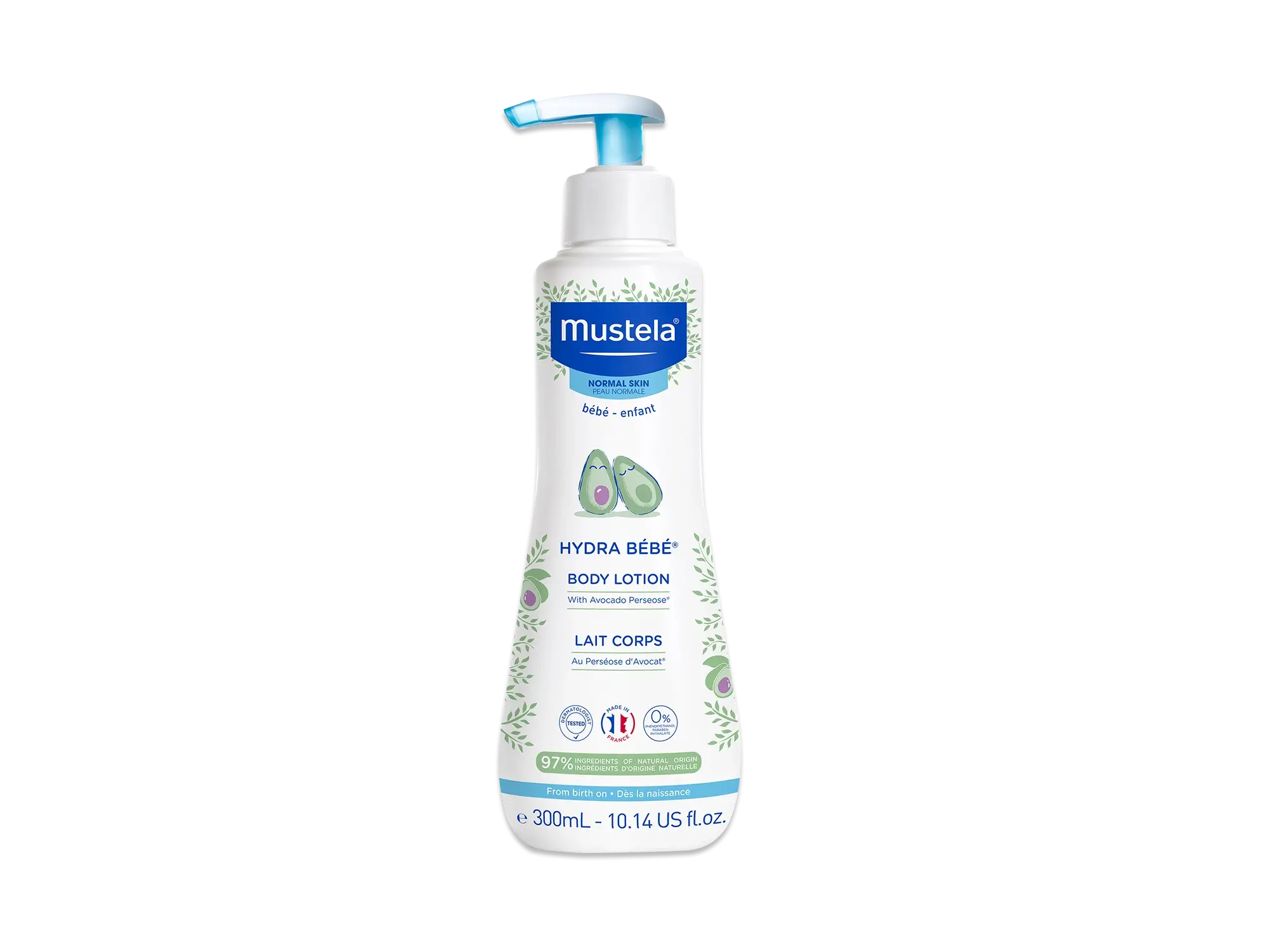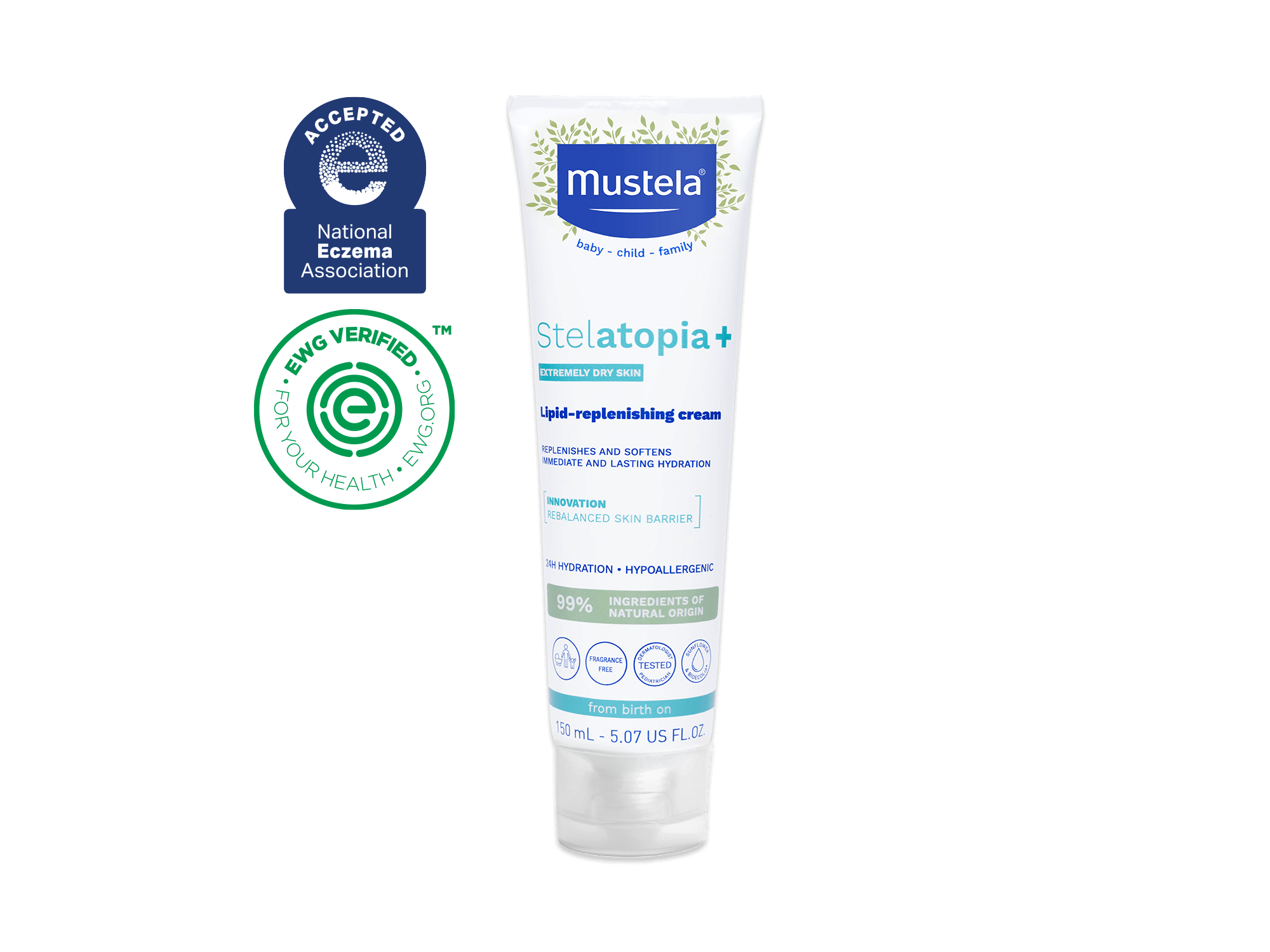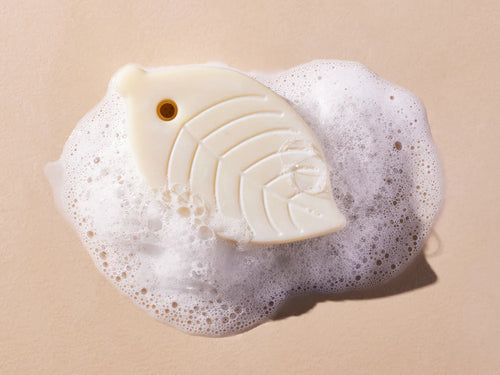Burping is an important part of your baby’s feeding time. If your baby is constantly fussy during or after feedings, helping them let out a good burp could ease their discomfort. Learning how to burp your baby is a great place to start!
In this article, we provide a complete guide for burping your baby, including why it’s important, when to do it, and the best ways to do it.
The Importance Of Burping Your Baby

Burping your baby should always follow a feeding session. This is because when your baby eats — whether from a bottle or breast — they will swallow some air. That air gets trapped in their tummy as little air bubbles that need to be released.
When you burp your baby, you’re helping the air bubbles escape. If they don’t escape, this can cause discomfort and your little one may become fussy and cranky.
When To Burp A Baby

During a feeding session, your little one will need to be burped anywhere from one to three times. It all depends on your baby and how efficient they are during their feedings.
If your baby is bottle-fed, burp them after they consume one to two ounces of formula. If you’re breastfeeding your baby, burp them every time you change sides.
Expert tip: If you’re nursing, try Mustela’s Nursing Comfort Balm to moisturize and protect your nipples between all those feedings! It eases discomfort and helps replenish and restore your skin during and after breastfeeding. This will help keep your skin comfortable while nursing.
And if you’re comfortable while you’re nursing, both you and your little one will be more relaxed. And that makes for an efficient nursing session.
How Long Will It Take If Your Baby Won’t Burp Right Away?
Burping your little one usually only takes a few minutes. Some babies may burp right away — even without your help. Some babies may burp while they’re feeding and won’t need to be burped afterward.
It all depends on your little one, how they feed, and a long list of other factors. Add to that the fact that some of the factors change from feeding to feeding, and you can see why it’s almost impossible to say one way or another how long it will take a baby to burp.
Your bundle of joy may burp immediately after the first feeding of the day, may burp during the next feeding, and then take two minutes to burp after the third feeding.
For some parents, though, their baby won’t burp right away — even after five minutes or more — and may start to feel uncomfortable with the extra gas in their stomach.
Don’t panic, and be patient. It may take 10, 15, even 20 minutes for your little one to finally burp. Try some of the suggestions we mention in this article to release the pressure that builds up while your little one feeds and help them feel right as rain again in no time.
How To Burp A Baby

To get all of those air bubbles out of your baby’s tummy, their back needs a little pat and their tummy needs a little pressure. These two things work together to force the smaller bubbles to collect into one large bubble, which can then be released.
Gently pat your baby’s back repeatedly and apply pressure on their belly by using one of the positions below to help them burp.
Burping Positions

Sitting Lap Position
- Sit your baby in your lap
- Place the palm of your hand over your baby’s stomach
- Support and hold your baby’s chest and chin with your fingers of the same hand you’re using to apply gentle pressure on their stomach
- Lean your baby forward
- Start patting your baby’s back
Tummy-Over-Lap Position
- While sitting down, lay your baby down on their stomach on top of your thighs
- Place your baby’s legs between your legs
- Lean your baby over one of your thighs and support their head with your hand
- Gently pat your baby’s back with your other hand
The Shoulder Position
- Hold your baby in the upright position and let them rest on your shoulder
- Support them by placing one hand on their bottom and one hand on their back
- Lean them over your shoulder just a little bit to add slight pressure to their stomach
- Gently pat your baby’s back
The Cradle Position
- Cradle your baby in your arm with their head facing away from you and their chin resting on your elbow
- Your arm will support and add pressure to their belly (place your hand between their legs)
- Use your free hand to pat your baby’s back
Expert Tips

Here a few tips to keep in mind when you’re burping your baby:
- Always have a burp cloth nearby or, better yet, draped over your shoulder or leg
- If your baby doesn’t burp after a few minutes, change their position and try again
- Keep trying to burp your baby before you continue their feeding session
- Keep our Cleansing Wipes or our No-Rinse Cleansing Water on hand for quick cleanups when spit-up accidents happen
Enlist Help When Your Baby Won’t Burp
If you’re fortunate enough to have your partner around during the day, enlisting their help when baby won’t burp is a great way to get the whole family involved.
If you’ve nursed — or even bottlefed — your newborn for an hour, you’re probably going to be stiff, sore, tired, or all three. Ask your partner, family member, or night nurse to take over burping duties when your little one is finished eating.
Not only does this give you a bit of time to recover and get yourself back together, but it also gives your baby and your partner time to bond.
Be sure your partner is familiar with some of the techniques on this list so that this special time together doesn’t become overly stressful.
If your partner can take charge of giving your little one a post-feeding bath or putting them down for a nap, even better. Again, this gives you some much-needed time to take a shower, eat a meal, or just relax before your baby gets hungry again.
Burping Challenges And Solutions

Keep in mind that not all babies are frequent burpers. Some babies pass enough gas that they won’t need to burp much.
If your little one doesn’t seem to burp a lot, isn’t bothered by gas pains, and is on track for their growth and weight gain, there’s no need to worry about whether or not they’re burping enough.
On the other hand, if your infant seems to be uncomfortable after feedings but isn’t burping much, there may be something going on.
Take a look at these common burping challenges and what you can do to help your little one release painful air bubbles.
Baby Won’t Burp And Is Awake
1) Wear Your Little One
If your baby won’t burp and is awake, wrap them in a carrier, sling, or backpack and go for a walk. The upright position, the pressure of the carrier, and the movement of your body all aids digestion and helps to move gas around and, eventually, out.
This is also a perfect time to tidy up, do your hair, or make a snack for yourself — you are hands free, after all!
Wearing your little one for a while after they eat not only helps release a difficult burp, but it also helps develop those bonds of closeness, trust, and love that you’ll cherish as your baby grows.
2) Gently Move Your Baby Up And Down
Another great way to help when baby won’t burp is to gently move them up and down. Holding them upright with their head on your shoulder and bouncing up and down is a classic example of this technique.
You can also try walking up and down a flight of stairs or moving from a sitting to a standing position while holding your little one.
Even dancing to your favorite song can help your little one burp after they’re done feeding. It’s also good exercise for you!
3) Try Infant Massage

Touch can soothe your little one like nothing else, and a gentle massage can calm your baby so that they’ll relax enough to burp after they’re done feeding.
A soft massage has many benefits above and beyond helping them to relax. Massage is also a great way to:
- Bond with your little one
- Help them sleep better
- Strengthen their muscles
- Improve their circulation
- Facilitate weight gain
- Build their immune system
- Reduce stress
- Improve their mood
Infant massage, when done right, even improves digestion, which makes it a great technique to know when baby won’t burp.
Before you try infant massage, talk to your pediatrician to find out if they have any concerns or suggestions.
Above all, be gentle with your massage — your baby’s tiny body is delicate — and apply a completely safe and natural baby massage oil or cream, such as Mustela Baby Oil, EWG-verified Organic Hydrating Cream with Olive Oil and Aloe, or Melting Massage Balm.
These products are composed of plant-based ingredients and enriched with such nutrients as elixir of Pomegranate Seed Oil, Sunflower Seed Oil, and Avocado Oil.
Not only are our oils, creams, and lotions loaded with ingredients of natural origin per ISO 16128 standard, but they’re also free of parabens, phthalates, and phenoxyethanol. And they’re gentle enough to use on newborns, so you can start massaging right away!
To help alleviate stomach issues and release the burp that’s in there, start by stroking the sides of your baby’s tummy. Once your little one is comfortable, begin working their whole belly, but avoid their belly button area to prevent yanking on the scar tissue.
Lightly stroke your baby’s tummy in a circular motion — first clockwise a few times, then counterclockwise a few times. If you find that one way works better when baby won’t burp, stick with that.
Both directions follow the natural path of the intestinal tract in your little one’s body and help to stimulate activity and digestion.
For more tips on the best infant massage, check out this article from the Musteala blog: Baby Massage 101: How To Massage Your Baby.
4) Wait It Out
Sometimes, just waiting it out can help when your baby won’t burp. If your little one isn’t crying or expressing their discomfort, you may need to just let their body work things out for itself.
Some babies just need a little extra time, so going back to regular activities may be just what they need to reduce the gas in their belly.
This is the perfect time to try some of the other suggestions on this list such as dancing, going for a walk, wrapping them in a carrier for a while, or giving them a massage — not because you want them to burp, but because they help develop bonds that will last a lifetime.
5) Bicycling
Bicycling is a great way to help your newborn pass gas from the other end, but you can also use it to good effect when your baby won’t burp.
The technique is simple:
- Lay your baby on their back
- Grasp one of their ankles, feet, or legs in each hand
- Lift their legs slightly while keeping their bottom down
- Gently move their legs in a way that mimics pedaling a bike
Doing so puts soft pressure on different parts of their abdomen and, eventually, helps them burp or toot, which relieves pressure and helps them relax.
Baby Won’t Burp, Wants To Sleep

During your baby’s first week of life, you might discover that they’re more interested in sleeping than burping...or anything else, for that matter!
If you’re trying to burp your baby and they’re falling asleep, sit them in an infant seat instead of laying them down flat on their back.
Sitting your baby in an upright position for 10 to 15 minutes will help keep their milk down and, eventually, the air bubbles will go away on their own. Gravity is amazing! This is also helpful in preventing reflux in your baby.
Note: Only use an infant seat during daytime feedings. Avoid sitting your baby in an infant seat after the late-evening feeding and middle-of-the-night feedings.
Spitting Up And Projectile Vomiting
Sometimes some of the ingested milk might come back up with your baby’s burp when the air bubble is released.
Spitting up is nothing to be concerned about but, rather, something that can be a normal occurrence in most babies. It often happens with sudden motion, like moving too quickly after eating.
If this is the case, it usually means your baby consumed more milk than their stomach can process in one feeding. When their stomach builds up pressure, spitting up is a way to release any excess milk.
Monitor how often this occurs, and if it happens pretty frequently, there’s a good chance you may need to reduce the number of ounces per feeding that your baby receives.
A different type of spit up that’s more alarming to parents is projectile vomiting. This type is more forceful and much greater in volume.
Occasional spells of projectile vomiting can be expected, but routine spells are something to keep an eye on. This could mean your baby isn’t getting enough calories and can become dehydrated.
Reach out to your baby’s pediatrician if projectile vomiting becomes the norm for them. Use your mommy or daddy instinct! It will let you know if their spit up or projectile vomiting spells are normal or something that needs medical attention.
Hiccups Or Gas
Burping doesn’t always relieve all the trapped air bubbles in your baby’s tummy. Hiccups or passing gas is the result when that happens.
Unfortunately, with passing gas, some babies resist the sensation and tighten their bottoms, which makes them super uncomfortable.
To help your baby get a little more comfortable and release the gas, place their back on your chest and pull their knees up to their chest.
If gas isn’t causing discomfort with your baby but hiccups are, treat them like a burp by using one of the burping positions we mentioned above. Gently pat your baby’s back and see if that helps.
If your baby gets the hiccups often after feedings, try offering less formula or breastmilk at one time. Instead, offer an additional feeding session. This way, your baby is still getting the same amount of milk, but it’s spread out rather than all in one feeding.
Prevent Gas When Your Baby Won’t Burp

One of the best ways to help when baby won’t burp is to prevent the gas from building up in the first place.
Here are some suggestions for breastfeeding and bottlefeeding.
Breastfeeding
- Keep baby well-fed (a hungry child will suckle too fast and swallow more gas)
- Be careful about milk letdown
- Try different nursing positions
- Talk to a lactation consultant
- Learn to latch your newborn correctly
Bottle Feeding
- Test the flow through the nipple first (replace if milk flows too quickly)
- Always use the right nipple size for your baby’s age
- Test the temperature of the liquid to make sure it’s not too cold or too hot
- Hold the bottle at an angle that allows minimal airflow into the liquid
- Try different formulas to see if your baby digest them better
- Talk to your doctor or pediatrician
Taking steps to prevent excess gas from building up in your little one’s belly may help avoid the times when your baby won’t burp.
And, as your little one gets older, they may grow out of the need to burp altogether.
When To Stop Burping Your Baby
There’s no exact age at which you have to stop burping your baby. Typically, though, it becomes less essential when they can sit up on their own.
Around the six-to-nine-month mark, most babies can hold themselves in a seated position on the floor. This is a more natural body alignment for digestion (gas rises while solids and liquids fall) so the burps may come out on their own without you needing to help.
Some babies will outgrow the need to be burped as early as four months old, while, for others, they may not outgrow it until 12 months or more. Neither one is wrong or right, so don’t worry if it stops early or goes late.
Taking Care Of You And Your Baby

After your baby is born, it’s a natural instinct as a parent to care for them. Burping your baby is one way to do just that.
Burping helps your little one stay comfortable and release any air bubbles that may have accumulated during a feeding. Burp your baby after they consume one to two ounces of formula or every time you switch breasts.
Gently patting your baby’s back by applying pressure to their tummy is the most effective way to burp your baby. Refer back to our four burping positions to see which one is best for your little one, and keep our tips in mind for more comfortable feeding sessions.
Finally, don’t forget to take care of yourself in the meantime! Treat yourself by trying our Stretch Marks Set that safely supports and cares for your changing skin.
We also recommend our Certified Organic Bath and Body Gift Set, which is good for you, your whole family, and the planet.
Now you’re ready to care for your new bundle of joy!

















